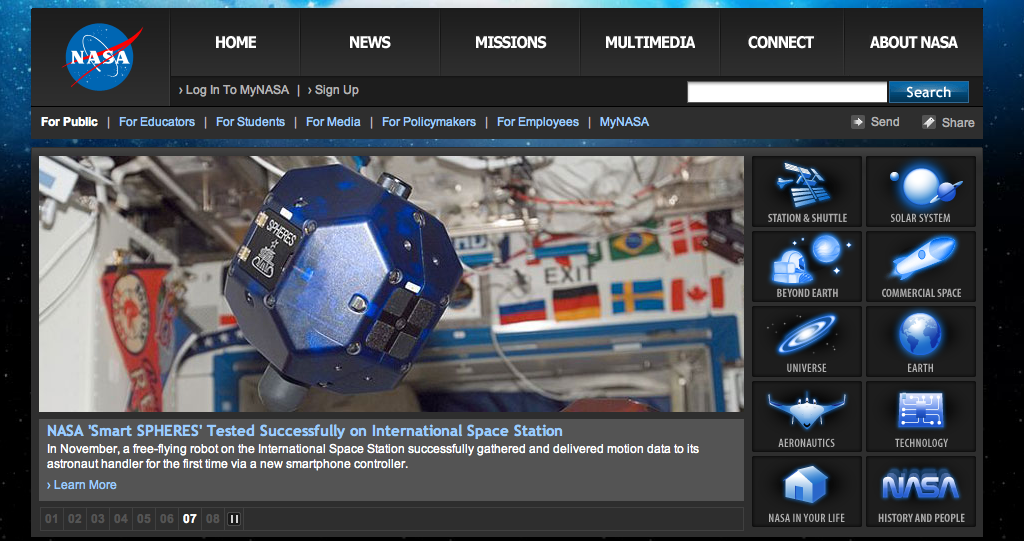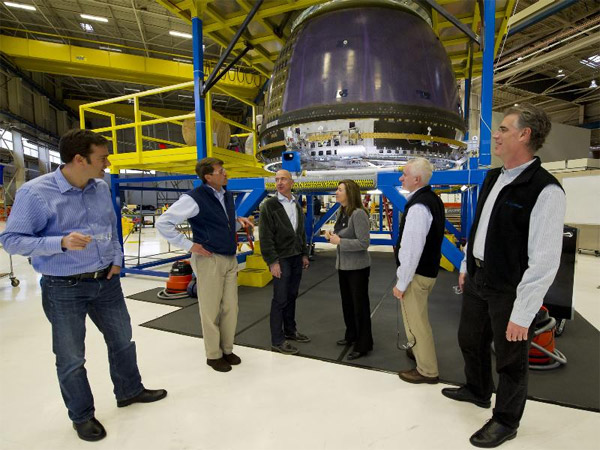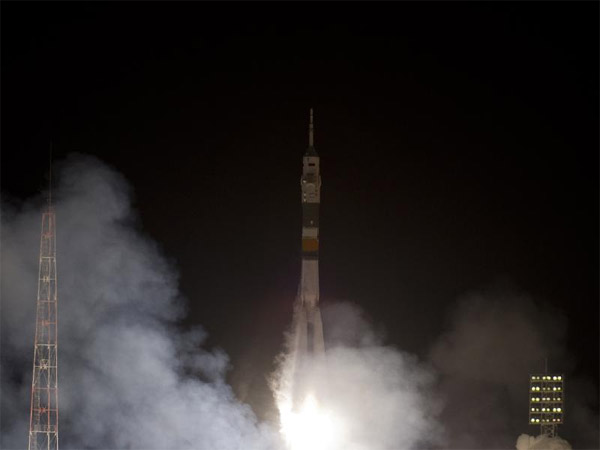Brands
NASA’s Content Strategy for Conquering the Blog Universe
Although best known for its exploits in space exploration and engineering, NASA is also one of the world’s largest web publishers, with its main portal getting 141 million hits this year alone. (That’s just 30% of the total traffic to NASA websites.)
Here’s how NASA manages to publish news, video, photography and mission updates that engages and satisfies millions of people every month:
Local Divisions All Contribute & Distribute Content
NASA’s massive content operation is driven by its myriad offices and divisions, most of which have their own publishing teams. It’s a huge resource for creation, but can be a challenge to manage, says Brian Dunbar, content manager for NASA’s main portal.
“We’re a very distributed organization,” Dunbar says. “I’m at NASA headquarters in Washington, D.C., but we also have 10 field centers, including Kennedy Space Center, Johnson Space Center in Houston and the Jet Propulsion Lab in California.”
NASA also has multiple lines of business from its human space flight group and aeronautics office to the Science Mission Directorate. Dunbar estimates that NASA has 1,600 public websites. In other words, the challenge goes beyond simple geographical distribution.
“We’re not just geographically dispersed, but we have multiple programs,” Dunbar says. “So we do have trouble
sometimes having so many websites. And sometimes one field center is focused more on, say, a particular milestone or a more narrow aspect of the mission, rather than the bigger picture.”
Each NASA field center has its own public affairs office, which handles social media content. Additionally, almost every NASA mission and program has its own outreach office generating unique content for social media and the web.
“Many of the people in the outreach offices are supporting websites – (sites not in www.nasa.gov) – and putting their primary efforts there,” Dunbar says. “Sometimes it’s honestly hard to get a little bit of content – even some very important content, because the people who are charged with posting that content – are being charged with posting it elsewhere.”
In total, Dunbar estimates, NASA has more than 100 people working to create, manage and distribute this content across some 160 different social media channels. Most combine their content role with other responsibilities, like media relations and public affairs.
It’s not possible to set a unified content strategy across such a distributed organization, Dunbar says.
“Honestly, we don’t have a formal content strategy in terms of knowing the kinds of things we’re going to be pushing out at any particular time, or for how we integrate these things together,” Dunbar says.
In House Curators Work Under Contracted, Professional Editors
A team of six at NASA headquarters create and manage home page content for NASA.gov, ranging from photo galleries and feature stories to video and mission updates. Dunbar’s annual budget for the home page is about $120,000, which pays for one editor on a contract basis.
The content management team at NASA headquarters has been using a customer satisfaction survey from ForeSee to gauge public reaction to the site – until recently, that is.
“We used it to really try to measure how people feel about the site and to make sure that they’re getting what they need,” Dunbar says. “It’s been a very useful tool to track when traffic is going up, and satisfaction is going up – when those two things are arising – you seem to feel like you’re doing the job.
“The unfortunate thing is that my budget got cut, and we lost the access to the customer satisfaction survey. I’m still struggling to get it back.”
Events Drive The Editorial Calendar
Story ideation is a constant battle for publishers, a recurring task that often bogs down content marketers especially. NASA looks to its own internal news events as fuel for rich content to publish.
NASA.gov has had 141 million hits so far this year – making 2011 a record year by some 20 percent. This spike in traffic is attributable to some major launches, including the Space Shuttle’s last mission and the launch of the latest Mars Rover.
“There’s no question that traffic to our sites is very heavily event driven,” Dunbar says. “In fact, in the two years that we’ve had drops in traffic, it’s been years that we haven’t had as many major events.”
The launch of the last Space Shuttle mission in 2011, for example, saw a spike of almost 500% in the amount of daily traffic.
Robust, Interoperable Tools Manage The Content Flow
Dunbar’s team uses eTouch‘s Digital Asset Manager, a content management system specially designed to enable NASA
employees to upload their content to NASA.gov without needing to know HTML.
Unfortunately, eTouch is no longer supporting the software, but Dunbar is keeping a close eye on the development of Content Management Interoperability Services (CMIS) as a possible replacement. (CMIS enables different content management systems to talk to each other.)
“Internally, we have interest in different websites, but of course the public just knows NASA, which means that they don’t know where to go to on all these other websites,” Dunbar says. “So if we’re not going to bring all the content into one repository, then at least having CMISes that could talk to each other would be very useful.”
NASA is an excellent example of an organization that, while not traditionally a publisher, manages to use its internal news and assets to produce content that captures the imaginations of millions.
Image by FlickrGet better at your job right now.
Read our monthly newsletter to master content marketing. It’s made for marketers, creators, and everyone in between.









